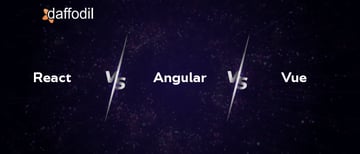
Machine Learning is one of the proficient technologies that we have for pattern recognition, data mining, statistical analysis on large volumes of data. It’s enabling machines to recognize intricate patterns and make intelligent decisions, without human intervention. In order to achieve this, the ML technology is accompanied by neural networks.
Neural networks are mathematical models. They use the same learning algorithms as the human brain to store and process information. Since neural networks are used in machines, they use “Artificial Neural Network (ANN)”.
“In a nutshell, a neural network is a multi-layer network of neurons that are used to classify data and make predictions.”
For building machine learning and deep learning algorithms, there are primarily two types of artificial neural networks: Convolutional Neural Network (CNN) and Recurrent Neural Network (RNN). These neural networks help machines to perform diverse tasks. However, which type of neural network should be trained to get the expected output.
The latter segment of this blog talks about CNN and RNN in detail and how both of them differentiate from each other. Let’s get started.
Understanding Convolutional Neural Network (CNN)
Convolutional Neural Network (CNN) is a multi-layer neural network which is preferably used for image classification, segmentation, or object detection. One of the prime differences between CNN and other neural networks is CNN takes input as a 2-D array and instead of feature extraction, CNNs directly operate on the images.
CNN is made up of three types of layers: convolutional, pooling, and fully-connected layer.
- A convolutional layer is the building block of a CNN. In this layer, a filter is applied to the input for creating a feature map that summarizes the features detected in the input.
- The output from the convolutional layer is sent to the pooling layer which then reduces the size of the feature map. This helps in reducing the information processing time significantly.
The convolutional and pooling processes are repeated, depending upon the size of the network. The condensed feature map thus received is sent to the fully-connected layer.
- The fully-connected layer flattens the maps together and compares the probability of features existing in conjunction with others.
Convolutional Neural Network (CNN) works best with data having a spatial relationship. That is why it works best for image data, classification, or regression prediction problems. The input in CNN is usually 2-dimensional, a field or matrix.
Understanding Recurrent Neural Networks (RNN)
Recurrent neural networks (RNN) have one or more recurrent (or cyclic) connections. In a traditional neural network, the inputs and outputs are independent of each other. However, when we have situations where output is dependent upon other layers, the sequential approach to learning, such as RNN is used. The cyclic connections in RNN record temporal relations/dependencies between the elements of a sequence.
For example, in predicting the next word in a sentence, it is necessary to know the previous words. Recurrent neural networks resolve this problem with the help of a Hidden Layer. This layer remembers some of the information in from sequence, which helps in prediction.
Some of the innovative applications of RNN includes speech recognition, time series anomaly detection, stock market prediction, music composition, image captioning, next-word prediction, etc.
ALSO READ: 7 Interesting Applications of Natural Language Processing (NLP)
CNN vs RNN: Differentiating Factors
A Convolutional Neural Network (CNN) learns to recognize patterns across space while a Recurrent Neural Network (RNN) helps in resolving temporal data problems. For example, CNN will recognize components of an image (lines, curves, etc.) and then combine these components to recognize objects/faces, etc. On the other hand, RNN learns to recognize patterns with time. For training a model to convert speech to text, it should first learn the low-level features like characters and then switch to high-level features such as work or phoneme detection in an audio clip.
Convolutional Neural Networks use connectivity patterns between the neurons, very similar to how it is arranged in the animal visual cortex. They respond to the overlapping regions tiling the visual field. On the other hand, Recurrent Neural Networks uses the time-series pattern. For example, what a user spoke last will impact what he/she will speak next.
CNNs work best for spatial data and thus is the most suitable option for image and video processing. RNN, on the other hand, work on sequential data and thus proves to be an appropriate option for text and speech analysis.
CNN or RNN: What does your Next AI Project Need?
Both the neural networks, convolutional and recurrent have their own set of benefits. And from the segment above, we could clearly distinguish between the types of tasks that can be performed using them.
Our AI application development team thoroughly analyzes the project requirement before finalizing the right technique for training the network. To understand which neural network will work best for your project, connect with our AI experts with to have a 30-minute free consultation session.



